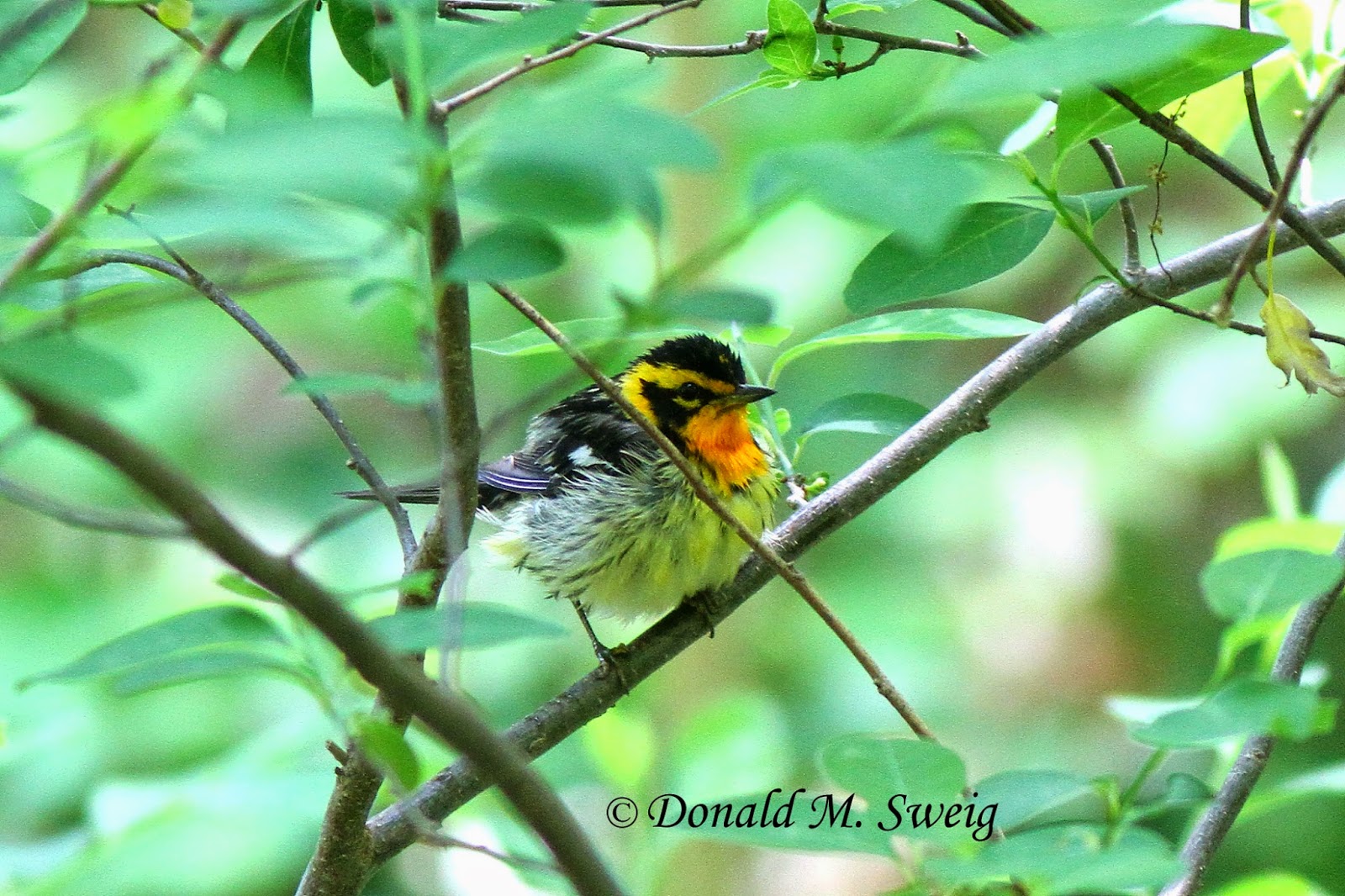Here are a few images.
Male Cape May Warbler (Setophaga tigrina) Monticello Park, Alexandria Va.
Male Blackburnian Warbler, (Setophaga fusca) Monticello Park, Alexandria, Va.
Male Blackburnian Warbler, (Setophaga fusca) Monticello Park, Alexandria, Va.
Male Black-throated Blue Warbler (Setophaga caerulescens) Monticello Park, Alexandria, Va.
Male Black-throated Green Warbler (Setophaga virens) Monticello Park, Alexandria, Va.
Two distant, and fortuitous, images of a Male Summer Tanager (Piranga rubra), not a common bird for this area, taken on River Road Montgomery County, Md.
A couple of Images of a Male Indigo Bunting (Passerina cyanea) taken in a Serviceberry bush at Great Falls National Park, Potomac Md.
I was fortunate to find a field full of migrating Bobolinks (Dolinchonyx oryzivorus) on Harrison Road, Fauquier, Co., Va. Once a fairly common bird, they are now often difficult to find.
This pair of American Redstarts (Setophaga ruiticilla) was building a nest along the trail at the Thompson Wildlife Management Area in Linden,Va.
Male on the nest.
Female on the nest.
Female on nest, male on nearby branch.
And, finally, a lovely visitor to my very own bird feeder: Male Rose-breasted Grosbeak (Pheucticus ludovicianus).
HAVE A NICE SUMMER !!

















































